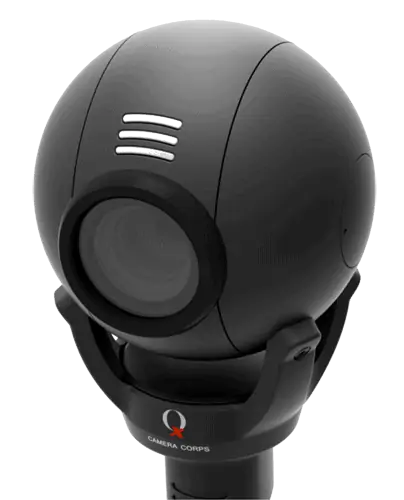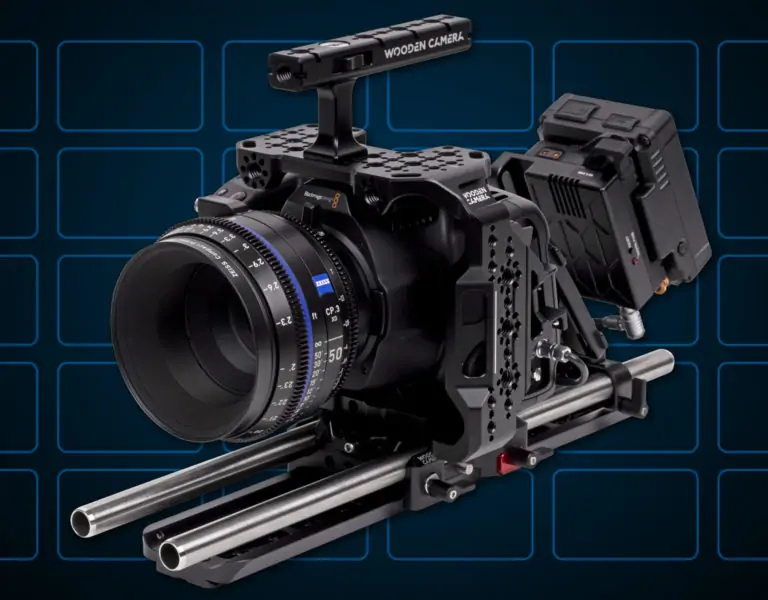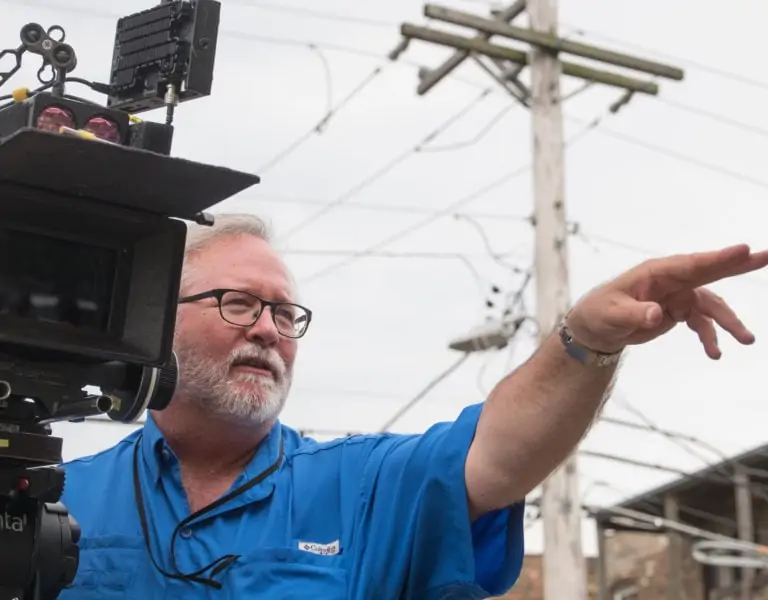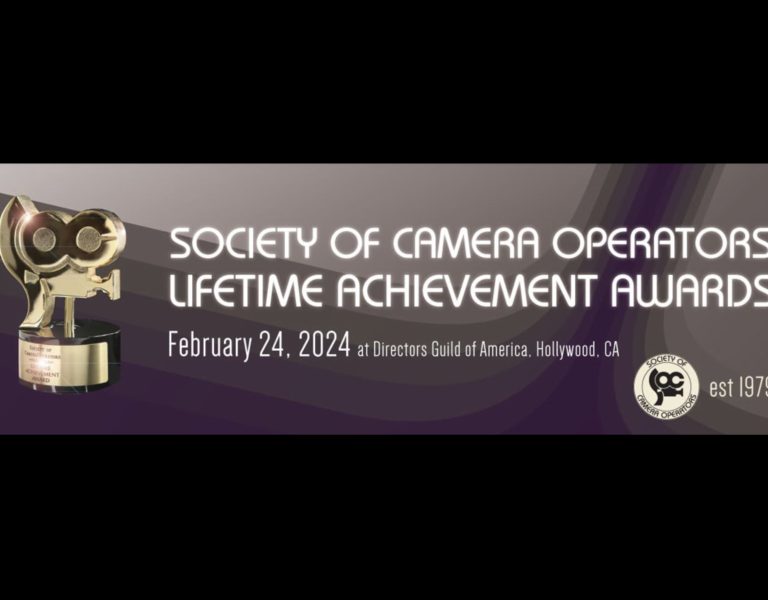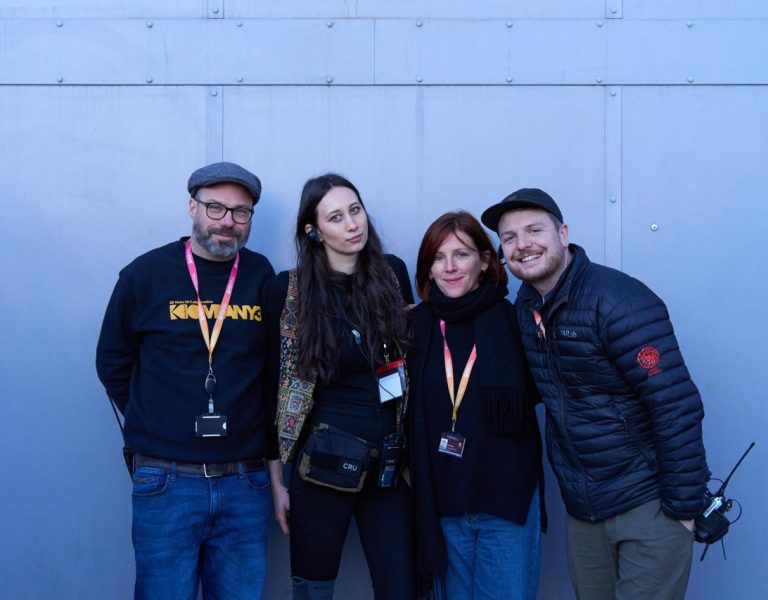KEEPING THE STORY MOVING
From sliders to SnorriCams, Steadicams and stabilisers, grip is so much more than just a support for the camera; it’s a way to make the lens dance in step with the story.
Cinematographers today have a huge range of camera supports to choose from, depending on the mood, blocking and logistics of the scene they are shooting, but one form of grip that has been around almost as long as cinema itself is the dolly. “I use a dancefloor dolly in my work a lot and feel like it’s one of the most creative ways to move the camera,” says Si Bell BSC, “especially when you have a creative grip behind the dolly. For me it’s a combination of scene and emotion and what is needed to tell the story.”
Bell’s typical process is to video the rehearsal using Artemis Pro, then show it to his grip Paul Kemp to discuss how it can be achieved. “We have developed a style and shorthand between myself and Si which I feel is something we have been working on for years,” offers Kemp, “but it’s at a stage where I can understand what Si wants from the shot with very little instruction.”
“Sometimes Paul might decide to skin the whole floor of the location,” notes Bell, “and in other situations – if there’s a smooth floor in the location – the camera move can be done on the soft wheels of the dolly.” The pair use a DJI Ronin 2 gimbal to smooth out any bumps.
Bell highlights a shot in Pennyworth, season two, episode seven: “There was a club scene where the camera needed to move through the club from the bar area into over-shoulder shots in a booth,” the DP explains.
Kemp takes up the story: “The best way to come up with this was to put a 10ft jib arm on a centre mount on a Chapman hybrid dolly, then lay a large dancefloor so myself and another grip could move the camera around the set. Usually I’d suggest a Technocrane, but due to the set-build access would have been quite time-consuming and difficult.”
“Once we shot the master we could use the same set-up for the closer shots,” Bell adds. “It gave us the creative freedom to expand the move and that’s something our director Catherine Morshead really loved.”
Sweeping shots
“I find that the choice of camera support can be the difference between completing the day’s work and not,” remarks DP David McFarland, who recently wrapped season one of Testament for Netflix. “This epic-scale series took us to many remote and extreme locations in the Sahara Desert, and the high desert and mountainous regions of the Atlas Mountains… Our cinematic language was that of a grandiose and sweeping style, where the camera is always moving and searching.”
McFarland employed a MovieTech Magnum Dolly and various arms including the MovieJib and ABC Light Crane. “This set-up was easy to transport and build on the often rocky terrain and was [essential] in covering long and moving dialogue scenes… Of course, we employed longer fixed arms – such as the Panther Galaxy Crane which reaches up to 14 metres – when photographing some of the [grander] battle scenes consisting of hundreds of background actors.”
Throughout, the A-camera was mounted on a Ronin 2, operated by McFarland via Master Wheels. He notes that the tension and drag can be dialled in, giving “the feel of an ARRI head… Also, when the terrain was too rocky for Steadicam work, the grips were able to carry the gimbal while I operated the pan and tilt remotely.”
Alana Mejía González and her regular collaborator, operator Oommen Jacob, are also fans of Ronin gimbals. A trick they have used several times is to place the Ronin on top of a plank of a wood on a slider; the slider allows a slow, creeping move, but Oomen can pick up the Ronin mid-take to develop it into something more energetic.
“An operator or the grip department I think is a bridge between a creative idea and a technical solution with the tools that are at his or her disposal,” Oommen reflects. “It’s a spontaneous problem-solving space, so I think knowing tools is really important to be efficient and to make the day… I would recommend my colleagues to find the right person behind the tool to enjoy it and profit from all the wonderful things that you can achieve with it.”
González’s remote controller of choice is the Force Pro, which can be mounted on a tripod and operated like “an invisible camera”. On the feature Tobacco Barns she used it for a scene with characters atop a building’s roof on location. “It was impossible for a crane or even a cherry picker to get to where we needed because of the neighbourhood crops that we could not affect… Basically what we did is we rigged the Ronin onto a wind-up [lighting] stand and just wound it up all the way.” González then operated from ground level via the Force Pro.
“In certain cases, my tendency would have been to call for Steadicam,” says González, “and it’s true that it’s still a tool that I use on many occasions – but I think that what we’ve learned… is that calling for the Ronin allows us a type of versatility that we would not have been able to have with the Steadicam.”
“I think both are really unique tools,” Jacob offers. “There’s a lot of overlap on what each of them can do. There is also some really unique stuff only either the gimbal or the Steadicam can do, so it’s not a replacement; it’s never a replacement. It’s definitely a creative choice.”
Ready, Steadi, go
Adam Etherington BSC’s creative choice on his most recent feature was to go with a particular flavour of Steadicam. “The ideologies behind the visual dynamic and aesthetic for Paris Has Fallen developed during an intensely involved prep period with director Oded Ruskin,” says the cinematographer. “We built our approach using considered and definitive movement, with shots that developed and evolved to reveal plot points and story beats. The ambition was to tell the story in a way that journeyed with the characters, creating a visceral experience for the audience that connected them to the action and to the characters’ experience.”
Etherington decided that only one tool fit the bill: the Steadicam AR. “The AR as a piece of technology, in the hands of a skilled operator, allows filmmakers to utilise the smooth considered movement of a Steadicam but within a 360-degree roll cage that maintains horizon as the operator jibs and rotates the arm…This enabled us to roll the camera mid-shot, creating Dutch angles and circular movements to track artists…”
Operating the AR for Paris Has Fallen was Will Lyte ACO. “Will has an incredible dedication to his craft and works incredibly hard both physically and creatively to ensure that he is in the peak condition to execute incredibly challenging ideas beautifully… We could begin shots within vehicles, small spaces within difficult locations, or at complex angles that we’d have never been able to get a Steadicam,” says Etherington, who also highlights the contributions of grip Cameron Lovegrove and A-camera operators Rob Carter ACO GBCT and Jon Beacham ACO.
Journeying with the characters was important too in Bleach, an NFTS student film currently to be seen on Channel 4’s website. “This is our first digital project, so the school really wants us to go crazy with our ideas,” remarks DP Rufai Ajala.
Bleach director Daniel Daniel was keen for the camera to follow the lead character closely as he struggles with loneliness and an unhealthy sex life. Ajala explains, “Most of the time he spends alone and he’s on Grindr going for a hook-up and we just wanted to be with him in that point of view, that kind of tunnel vision you get when you’re like, ‘Okay, I want to just hook up with someone.’”
Searching for references in pre-production, Ajala and Daniel came across Angst, a 1983 feature shot by Zbigniew Rybczyński, specifically a scene in which a character walks down a street and the camera – though clearly fixed to his body – rotates around him. “That was directly what we were looking for, for this one sequence where the character has this breakdown moment,” says Ajala.
The young DP tracked down a DVD interview in which Rybczyński explained how the SnorriCam worked. “Because we didn’t have the budget, making a more cost-effective 360 SnorriCam was our next battle,” Ajala continues. A surprising solution came from their producer, an avid hula-hooper. “She told us about this device that professional hula-hoopers have which is like a hula-hoop training belt.” The students purchased one of these belts, which is size-adjustable and has a track system around which a weighted ball on a string can travel; they replaced the ball and string with a GoPro mounted on a rigid arm.
While DIY rigs like this undoubtedly have their place, James Medcraft found himself wanting a more robust solution for immersive shots. “I was doing a video game film called Grid Legends, a ‘choose your own adventure’ film,” he recalls. “Quite a lot of that was POV-orientated and after doing lots of POV work for quite a long time I always thought there could’ve been a better solution, because… it’s always been a bit of a DIY set-up and there’s never been really a professional solution for it.”
So Medcraft began developing his own POV rig, Cyclops: “I got the idea from stereoscopic cameras and autocue systems and the idea of basically splitting the vision.” The rig – currently based around a skydiving helmet – mounts the camera pointing straight down into a 45-degree angled surface, similar to a half-silvered mirror, in front of the wearer’s eyes. The scene in front of the wearer is therefore reflected up into the lens while obstructing their vision no more than a pair of sunglasses. “The mission of this is to enable cinematographers to effectively replicate the vision in terms of movement perception and also to enable just a more enjoyable experience on set,” Medcraft notes, adding, “the actors can actually make [eye] contact.”
Acting as the lead designer, Medcraft has collaborated with Ronford Baker and optical specialists to develop Cyclops. “It’s been about three-and-a-half years in development so far,” he says. “I’ve had to go through the whole optical design process of having my own glass designed, manufactured and specially formulated.”
Medcraft himself filmed a promo for the Royal Opera House with the prototype of Cyclops. Since then, uses have included an RAF commercial specifically targeted at video gamers, shot by DP Tony C. Miller, as well as PlayStation and mobile phone ads, and even a training video for McDonald’s. “The next big thing which I want it to go out on is drama and features,” says Medcraft. “I mean, if there was a Peep Show feature film then this will be the product for it!”




